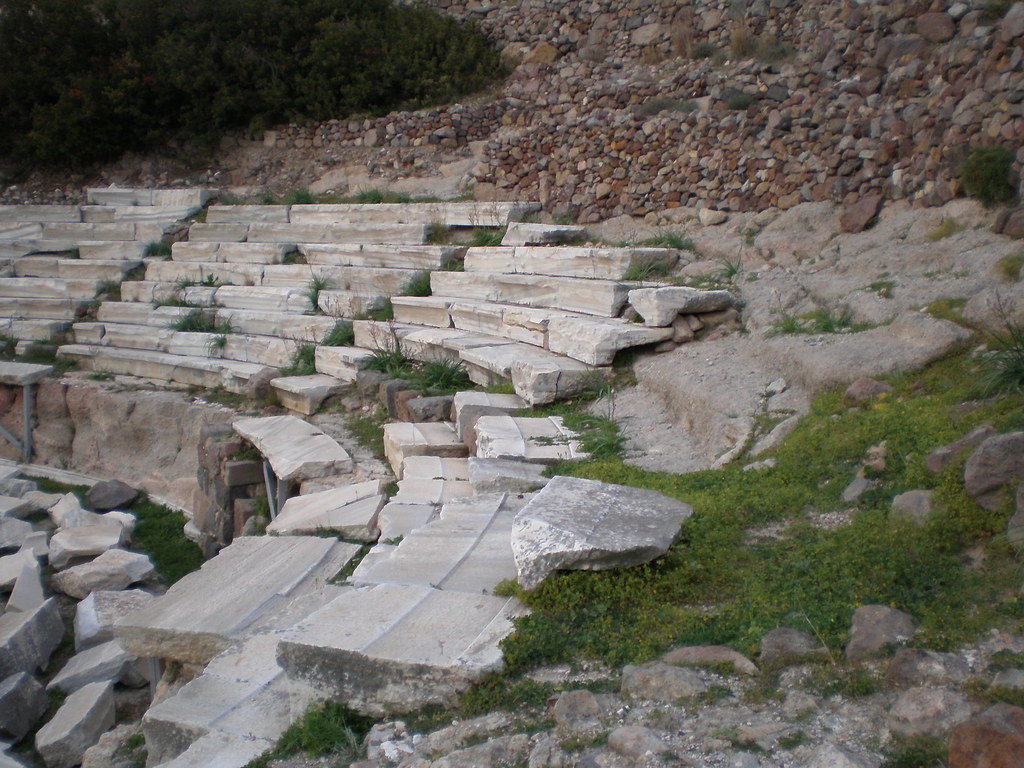During the 5th century BC, Milos allied with Sparta during the Peloponnesian War, a decision that led to tragic consequences when Athens invaded in 416 BC, killing the men and enslaving the women and children. This dark chapter was famously documented by Thucydides and remains a powerful historical reference on ethics and war.
In the Hellenistic period, Milos continued to thrive. It was during this time that the island gave the world one of its greatest archaeological treasures — the Venus de Milo, a statue discovered in 1820 and now housed in the Louvre Museum in Paris. This masterpiece is a symbol of ancient Greek beauty and artistry.
Roman and Christian Eras
Milos also flourished under Roman rule. Visitors today can explore the ancient Roman theater in Tripiti, which still offers breathtaking views of the sea. Nearby, the Catacombs of Milos — the most significant early Christian burial site in Greece — reveal the island’s early conversion to Christianity and its role in the spread of the faith.
A Living History
From Byzantine churches to Venetian castles and Ottoman remnants, Milos’ rich tapestry of history is visible at every turn. Whether you’re wandering through the ancient ruins of Phylakopi, climbing to the Castle of Plaka, or standing where the Venus once stood, Milos connects you directly to Greece’s deep cultural roots.
📍 Discover Milos beyond its beaches — explore its ancient past and uncover the soul of the Aegean.
#MilosIslandHistory #AncientMilos #GreekIslandHeritage #VenusDeMilo #VisitMilos #CycladicHistory #ArchaeologyGreece

